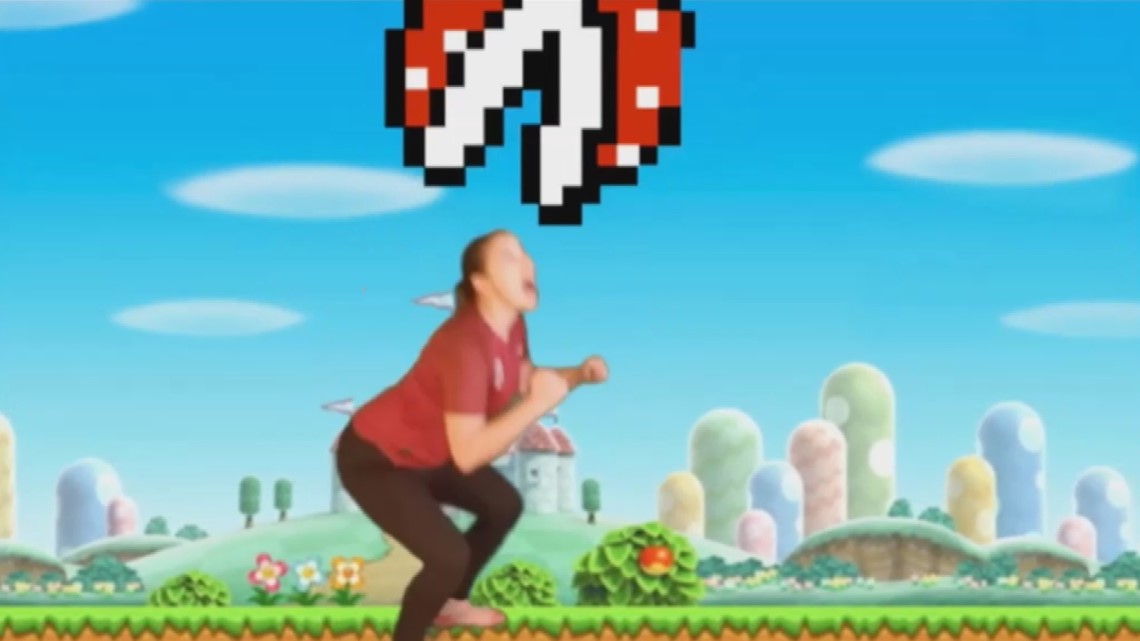PORTLAND, Ore. — We’ve heard from teachers throughout the pandemic and many of them have said participation is one of the many challenges of distance learning. Teachers are trying to keep kids engaged but it can be difficult through a screen.
P.E. teachers in the Portland Public School District said many students choose to keep their cameras off during online learning, which makes it even more difficult for teachers to connect with students.
In an effort to connect and engage with their students, teachers like Mike Rittman and Julia Stevens have been creative throughout the COVID-19 pandemic.
Both Rittman and Stevens have made fun videos to inspire kids to be active. Some were recorded at a school building, on the Oregon Coast, or even employed the use of a green screen. Still, as other teachers in different departments and districts have said, participation continues to be a difficult issue.
“The tough thing is participation and getting kids to show up to class. It would be great to see all the students smiling, exercising,” said Rittman, who is a P.E. teacher in the Portland Public School District.
Rittman said between 25%-50% of his students don’t attend class.
“In each of my classes, there are multiple kids in each class that I have not seen once this entire school year,” he said.
“I taught one kindergarten class earlier this year and one kid showed up.”
At the middle school level, Rittman said there’s better attendance, with between 20%-25% percent of kids not showing up. But in a class of say, 25 students, Rittman said he might get three kids who turn on their video cameras.
“That means 22 kids are logged into class. I have no idea whether they’re actually participating in class,” said Rittman.


Students are not required to turn on their cameras in a number of school districts in Oregon due to privacy reasons. Other teachers have explained that some students may not have a home life they’re comfortable sharing with their teacher and classmates, or they might be uncomfortable being on camera in the first place.
Julia Stevens also teaches P.E. at PPS and is the President of the Oregon Society of Health and Physical Educators. She said teachers all over are facing similar challenges.
“It can be hard and it can be really discouraging too if a kiddo doesn’t feel comfortable turning their cameras on. But on the other side we have to be respectful of that choice as well,” said Stevens.
Stevens said that while a number of kids may not be engaging, she pointed out that there are other students who are thriving in the online environment. She said some of her more introverted students who may not have felt comfortable talking to her in person, have blossomed in distance learning and have become more communicative.


In Oregon, P.E. is required, said Stevens. But to her, P.E. is more than just satisfying a physical fitness requirement.
“When we don’t see those kiddos, it’s hard for us to connect with them it’s hard for us to help support them.”
Additionally, Stevens said P.E. has changed over the years. It’s no longer just about physical fitness and athleticism. It benefits kids in more ways than one.
“We are talking about student wellness. We talk about self-regulation. We talk about mindfulness,” said Stevens.
The physical activity, as well as social and emotional well-being, are all crucial to students said both Rittman and Stevens, especially during a stressful time like the pandemic.
“Anything you can do to stay active, get up, get moving, maintain your health, I’m all for it,” said Rittman.
“We just want some kind of interaction with students because we care about them,” Stevens said.

